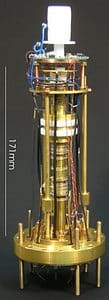Typically in physics, your calculations and such are as precise as your use of constants. Meaning, if you have a skewed value for your constant, this will obviously affect all the computations where this constant is used. Today, all the important physical constants are rather precisely known, whether we’re talking about the speed of light or tau mass. For most real-life applications, you don’t really need to work with figures that are correct down to the 19th digit. Some work, however, requires the most precise measurement possible.
Recently, German scientists published a paper in Nature in which the detail the methodology they used to perform the most precise measurement of an electron’s mass to date, down to parts per trillion. To this end, the researchers used a complex method that relies on strengthening the measurement for other constants involved in the electron mass measurement itself.
Since scientists first began to tinker with the concepts of molecules, atoms, electrons, neutrons and so forth, there has always been a need to precisely measure particle mass. For most applications, you don’t need an exhaustive measurement, but come the age of high energy particle physics, this need has never been more important and considering an electron weighs so very little, it’s a really tough job.
The team led by Sven Sturm of the Max Planck Institute for Nuclear Physics in Heidelberg first bound an electorn to a reference ion – a hydrogen-like carbon nucleus, stripped down to a single electron. This nucleus has a known mass. Then, using Penning trap apparatus you put the ion-electron pair in motion around a circular path, coerced by both magnetic and electric field. The scientists first measured the frequency of the ion-electron system, then just that of the electron. Following a complicated QED calculation, which took into account this ratio, the mass of the ion, the ration between electron and ion charge, a refined value for the g-factor (more on this here), the team ended up with the most precise value for an electron’s mass so far.
The electron has 0.000548579909067 of an atomic mass unit, the measurement unit for particles, according to the calculation, which factors in variables for statistical and experimental uncertainties. This marks a 13-fold improvement in measurement accuracy.










